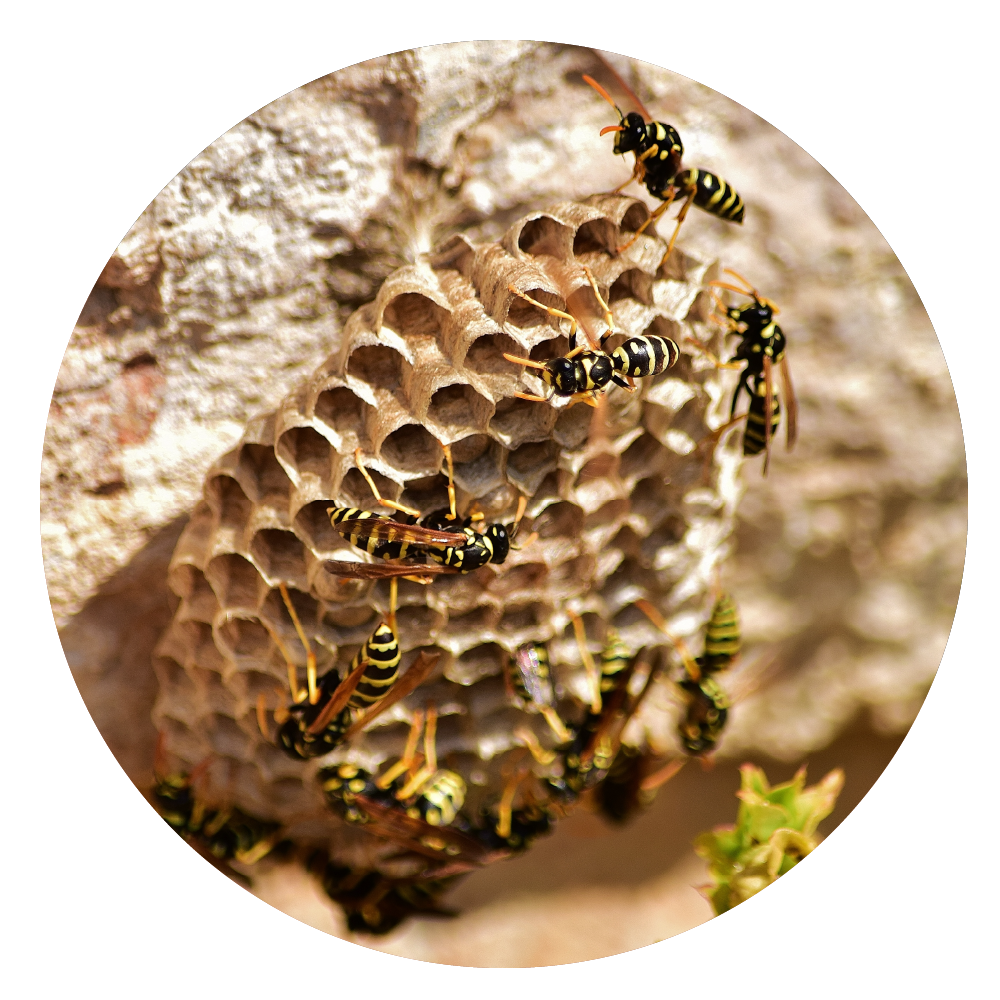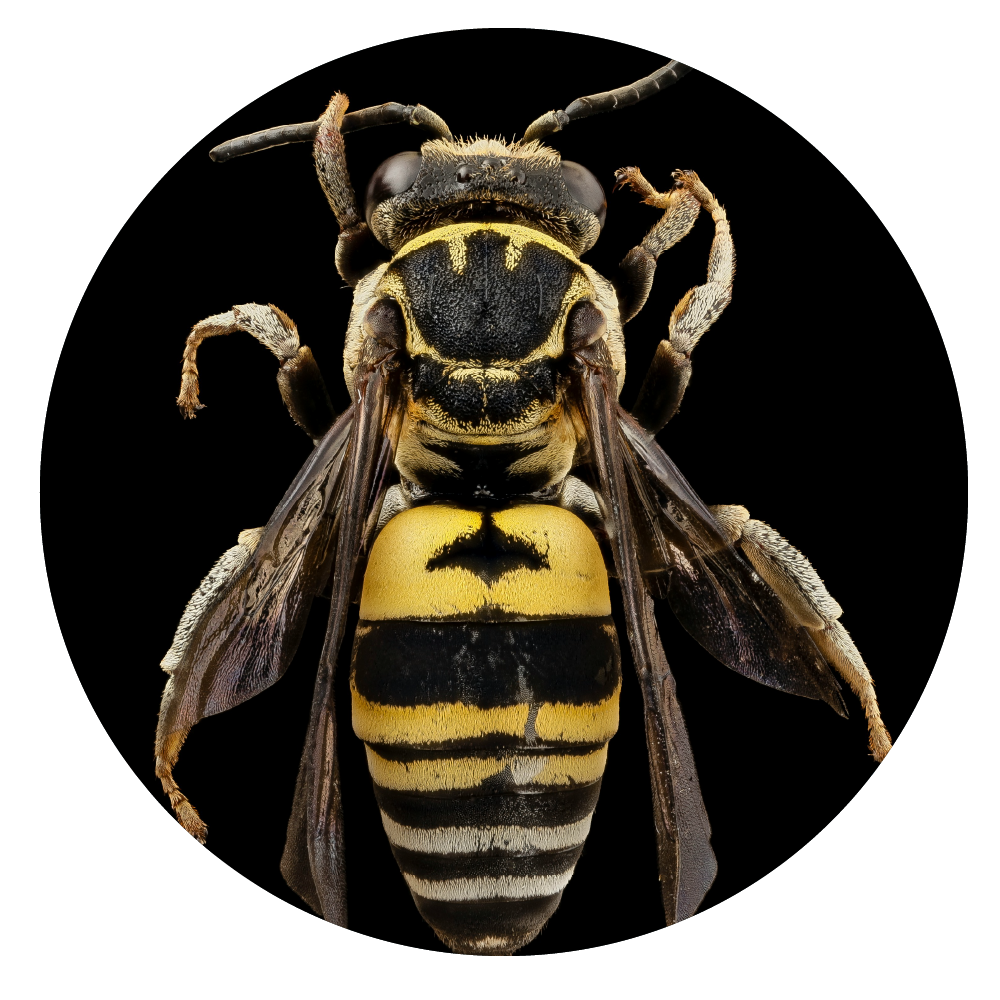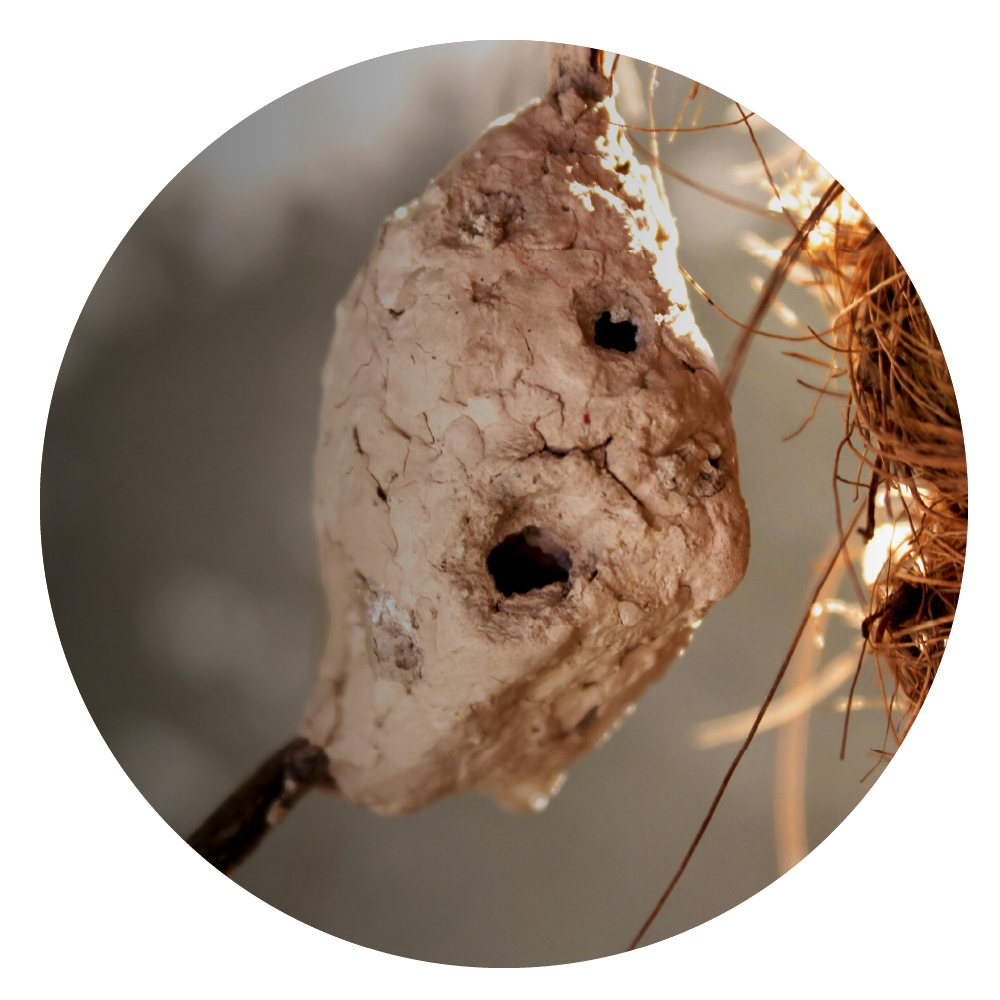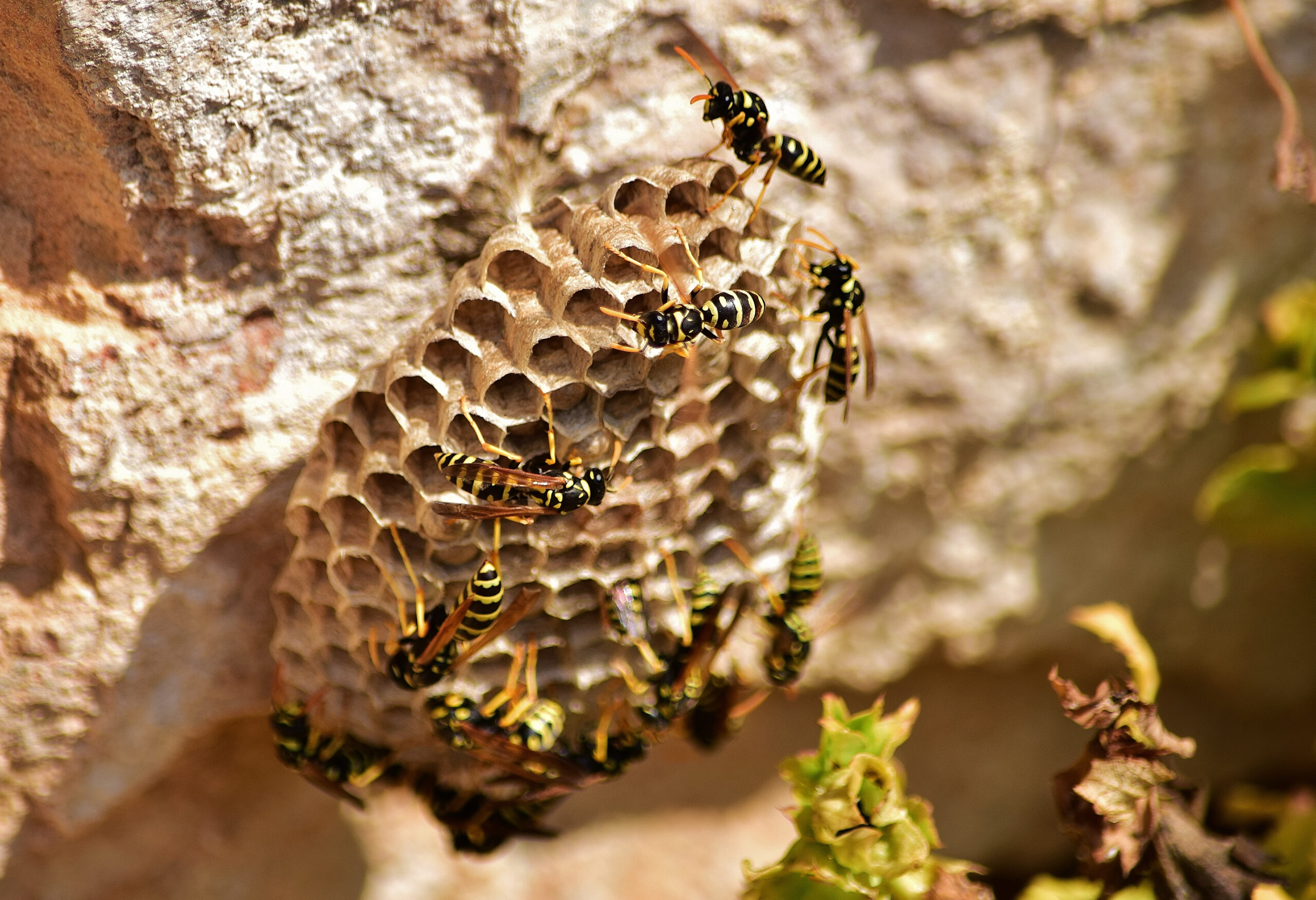Wasps
Wasps and hornets, being naturally aggressive insects, exhibit strong protective instincts towards their nests and food supplies. When sensing danger, they release a pheromone that summons their allies, thus it is ill-advised to approach or endeavour to eliminate a wasp or hornet nest independently.



Treatment
A proficiently trained technician will visit the premises and conduct a thorough inspection before determining the appropriate method to address or eliminate the nest.
We provide residential and commercial wasp treatment.

Have a question? check these answers.
Wasps and hornets are significant nuisances and are notorious for stinging when agitated or confined, which can trigger potentially lethal anaphylactic shock in individuals allergic to stings.
The venom of wasps contains a mixture of toxins, some of which can induce Kounis syndrome, a condition where the blood vessels constrict, potentially leading to a heart attack.
When a wasp stings, it releases an alarm pheromone. If you're in proximity to their nest, swarms of wasps will respond to this pheromone and may also assail you.
The unmistakable indicator of a wasp nest nearby is a noticeable surge in activity congregating around a specific area of your property, particularly intensifying on warm, sunny days. Common areas for their ingress include crevices between tiles or within the eaves.
Wasps' nests should only be removed if they are causing an issue and present a danger to human health.
The primary method for distinguishing between a wasp and a bee lies in their physical characteristics. Bees typically possess robust, furry bodies with flat hind legs, whereas wasps have slender bodies with a distinct narrow waist and a smooth, glossy appearance, often sporting a brighter shade of yellow.
Furthermore, their nesting habits vary considerably. Bee colonies construct exposed combs crafted from wax, whereas wasps fashion their nests from paper, typically forming spherical shapes with an outer paper casing.
Wasp nests undergo cycles, typically spanning 3 to 4 months in duration.


